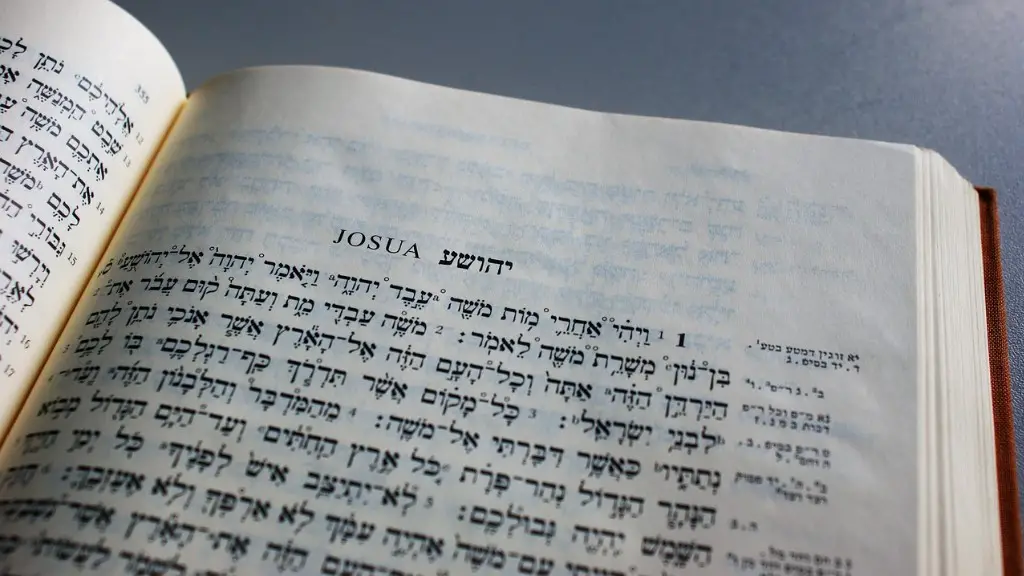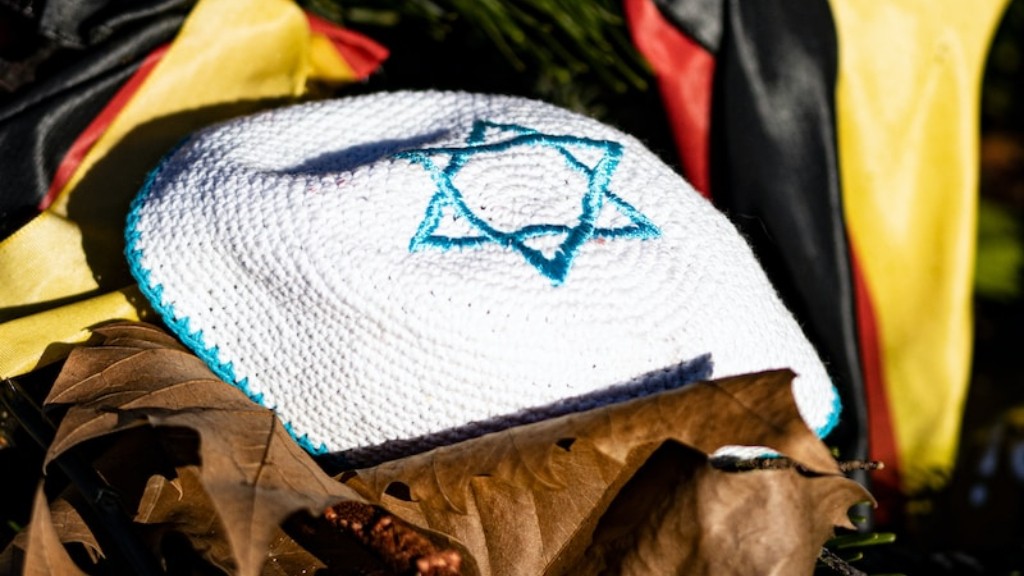The Menorah In Judaism – What Is It?
Judaism is a religious tradition that has been around for millennia. It is closely knit with not only religious practices but also with cultural and political practices as well. One of the most important symbols of Jewish tradition is the Menorah and it has been in existence since ancient times.
The name Menorah can be translated literally in Hebrew as ‘a sacred lampstand’. It is said that the original menorah was first used by Moses in order to light the seven-branched candelabra. The Menorah was carried through the wilderness of Sinai by the Children of Israel and was a sign of their faith in the Almighty.
In the Mishnah and Talmud, it is written that the Menorah was an essential part of the Temple services. This seven-branched lampstand was also used in the home of a Jewish family at the time of the Temple to signify the importance of the Torah and guide them in their faith.
The design of the Menorah is believed to have been based on a description given in the Old Testament, and it is also a symbol of Judaism in the modern world. The lampstand has seven branches, which represent the six days of the week, plus what is believed to be a seventh day – the Sabbath. The branches are illuminated for the weekly Sabbath service, and are also lit on certain Jewish festivals.
A Menorah is also prominent in the emblem of the State of Israel, although in this instance, it is a six-branched candelabra which symbolizes the historical continuity of the Jewish people. Some people also believe that the Menorah also has a symbolic relationship with the tree of life, which is seen as a representation of the connectedness of all living things.
Where Is The Menorah Used?
The Menorah is used in homes, synagogues and other places of worship. It is used during the festival of Hanukkah, to commemorate the Maccabean revolt against the occupying Greek forces. The holiday is celebrated with the lighting of an eight-branched Menorah. One extra candle is lit on each of the eight nights of the festival, to symbolize the miracle of the oil that lasted for eight days when the ancient temple was rededicated.
Menorahs are also used during services on the Sabbath and other Jewish holidays. On the Sabbath the candle is lit to honor the day of rest, and during holidays, a number of candles are lit, corresponding to the day of the week. The lights of the Menorah also traditionally signal the close of the Sabbath and the start of a new week.
In addition to religious ceremonies, the Menorah is a popular decorative item, and can be found as a centerpiece at festive family dinners. Other than Hanukkah, the Menorah is not just a symbol of Judaism, it is also a symbol of Jewish culture and identity.
The Types Of Menorah
Menorahs come in a variety of styles, sizes and materials. They primarily differ in the number of branches they have, although the traditional form is still the most popular. The modern Menorahs are usually made of silver, brass or glass, and often feature intricate designs or special shapes.
Many modern models include an electric motor that rotates the Menorah from left to right and can accommodate multiple candles.
Who Produces The Menorah?
The Menorah is produced by a variety of artisans across the world. In recent years, a large number of modern artisans have used their artistic skills to create some truly remarkable Menorahs, combining artistic expression and traditional designs.
In addition to artisans, modern Menorahs have also been produced by a variety of companies, including some of the largest manufacturers in the world. No matter the source, all of these companies have strived to create a product that meets the highest standards of quality and craftsmanship.
Where Can You Buy The Menorah?
The Menorah can be found in many stores and online shops, both secular and religious. For example, you can find them in Judaica stores, as well as in department stores. Online shops also sell Menorahs, and some of these websites also provide additional information about them and their history.
How Has The Menorah Changed With Time?
The Menorah has been an important symbol of Judaism for millennia and continues to be, even in the present day. While the design of the seven-branched Menorah has not changed much throughout the centuries, modern artisans have found ways to make unique and beautiful Menorahs that can be used in both secular and religious settings.
The addition of modern materials, such as metal and glass, has allowed artisans to create strikingly beautiful pieces that reflect traditional designs, while retaining their own unique flair. In addition, there have been Menorahs designed as part of collectibles and artwork, which is an innovative way of combining religious tradition and modern artistry.
The Significance Of The Menorah
The Menorah is a visible reminder of the heritage and culture of the Jewish people. Through this symbol, Jewish communities and families are able to express their faith, pride and commitment to the Jewish faith. For example, while the Menorah is often a feature of the home, a unique candle lighting ceremony during the Sabbath can serve as a reaffirmation of faith and a celebration of the community.
The Menorah is also a tangible reminder of the struggles and perseverance of the Jewish people, leading to the power of faith and a dedication to the maintenance of tradition that has been passed down through the ages.
The Impact Of The Menorah On Jews Today
The Menorah is a powerful symbol of Jewish identity and has become a source of pride in many communities, including those that may have been separated from the religion and culture of their ancestors. The Menorah serves as a reminder of the spiritual journey of the Jewish people and of their ongoing commitment to the growth of their faith.
One of the ways in which the Menorah has become more visible in the modern world is through the increasing popularity of Hanukkah, the holiday that celebrates the Maccabean revolt and the miracle of the oil that lasted for eight days. The lighting of the Menorah during Hanukkah is a powerful symbol of the resilience of the Jewish people and their commitment to the Jewish faith and culture.
The Menorah also serves as a symbol of Jewish solidarity and hope in a time of political unrest. In these times, the Menorah is a reminder of the values and beliefs that have kept the Jewish people together, even when they have been separated by miles and by years.
The Cultural Significance Of The Menorah
The Menorah is a symbol of hope, unity, and heritage in both the Jewish community and the world at large. It is a reminder of our shared history and the spirit of resilience that has been passed down through generations.
The Menorah serves as a reminder of the importance of tradition, as well as the power of community. In an increasingly globalized world, the Menorah can remind us of the importance of celebrating our culture and our faith, and of standing together in times of challenge and hardship.
The Menorah As An Artistic Symbol
The Menorah is a powerful symbol of Jewish culture, tradition, and identity. It has inspired a range of artistic expressions, from classic sculptures to modern art. The Menorah has been used in paintings, sculptures, stained glass, and more.
The Menorah has also been featured prominently in literature, music, and other forms of art. Its symbolism has been explored in a range of cultural expressions, from traditional tales to modern interpretations.
Conclusion
The Menorah is an incredibly powerful symbol of Jewish faith and culture. Its symbolism has been explored and expressed throughout time, and it serves as a reminder of the power of hope and unity. From its inception in antiquity to modern interpretations, the Menorah continues to be a powerful symbol of faith and resilience in an ever-changing world.

